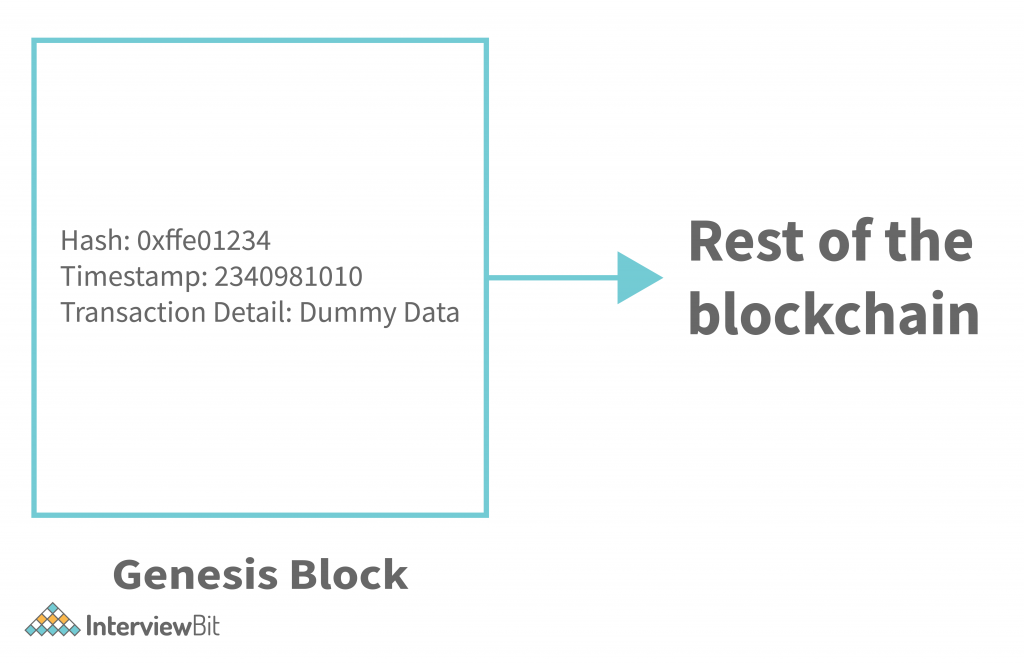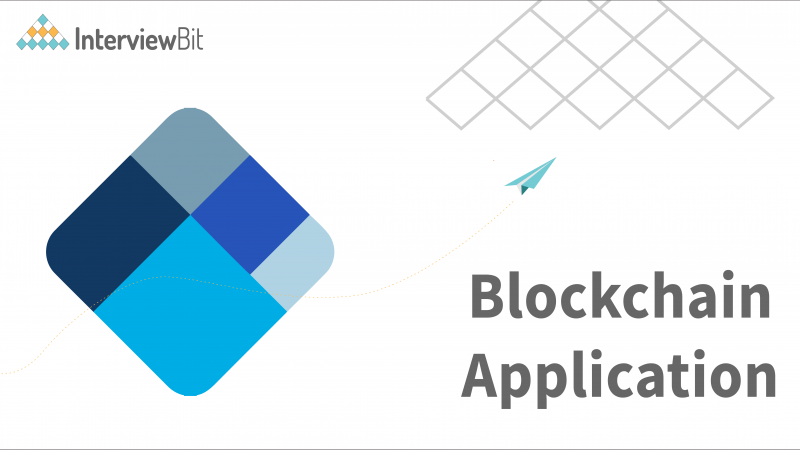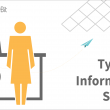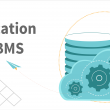- Introduction
- What is Blockchain Technology?
- Why is Blockchain Called Decentralized and Distributed?
- Basic Structure of Blockchain
- Top Applications of Blockchain You Must Know
- 1. Money Transfers:
- 2. Digital Voting:
- 3. Insurance:
- 4. Transparent Budgeting:
- 5. Smart Appliances:
- 6. Loan Lending
- 7. Real estate:
- 8. Non-Fungible Tokens (NFTs):
- 9. Media (Artists Rights)
- Conclusion
- Additional Resources
Introduction
Most people think that blockchain is the latest technology that came into existence with Bitcoin. However, this is not completely true. Yes, the evolution and growth of blockchain technology began with the increasing popularity of Bitcoin, but, blockchain is a technology that goes back to the 1990s. This was the first time blockchain technology and its idea came into existence. After this, in October 2008, a Bitcoin whitepaper was published by Satoshi Nakamoto and since then, blockchain has been the new hype in the technology market. Everyone wants to learn about blockchain and how it works.
However, many young developers who want to learn this technology are afraid that blockchain is limited to the use of Cryptocurrency only and does not have much scope. So, in this article, we are going to discuss the applications of Blockchain in detail so that the scope of blockchain technology becomes clear and we can get more excited to learn it.
What is Blockchain Technology?
Blockchain is a decentralized, distributed, and immutable digital ledger. Basically, blockchain is called a ledger as it is mostly used to store the details of transactions and a ledger is a record book of transactions of a particular organization.
Confused about your next job?
Why is Blockchain Called Decentralized and Distributed?
The meaning of decentralized is quite simple. We will understand it with the help of an example and also see why the blockchain being decentralized is an advantage.
Let us take the example of the Government of India and RBI (Reserve Bank of India). They are the central authorities when it comes to money in India. They are responsible for making all the rules and regulations and the people of India have to follow them. So, this is centralization.
When no central authority is responsible for a task and everyone in the network has the same authority then the network is said to be decentralized. Decentralized networks are beginning to be preferred because of the problems due to centralization.
For instance, when the Indian Government announced demonetization, many people agreed while many did not. So, even the people who did not like the idea had no right or authority or choice other than accepting it because the decision was in the hands of central authority.
Blockchain is also a distributed system as the entire network is spread across the entire globe on different computers (nodes). Every node in the blockchain network has a copy of the blockchain.
Basic Structure of Blockchain
“Blockchain”, as the name suggests is a chain of blocks that are connected to each other via some method. A block in a blockchain stores some data (usually related to transactions). It also stores the timestamp of its creation and also has a unique hash value. The hash value of a block is generated using hashing algorithms (hash functions) such as SHA 256, etc.
The input to the hash function for generating the unique hash of a block is the data inside the block, the time of its creation, and the hash of the previous block. (There are many other inputs that we can ignore for now).
So, every block in a blockchain is connected to the previous block because it stores the hash of the previous block.

You might be wondering that if every block of a blockchain contains the hash of the previous block, what does the first block contain?
The first block of the blockchain is called the Genesis Block. This block contains some dummy data and does not have a previous hash value. So, this is the start of the blockchain.

Now that we have understood the basics of blockchain and have an idea about the basic structure of the blockchain too, let us now move to the applications of blockchain.
Top Applications of Blockchain You Must Know
The following are the top applications of blockchain technology:
1. Money Transfers:
Money transfers (Financial Transactions) are very common nowadays. This process can be made faster and more secure using blockchain. There is no doubt about the fact that a blockchain-based money transfer application will be more secure as compared to regular money transfer applications. Also, Cross-Border Financial Transfers can be made faster and less expensive using blockchain since it is processed through a common platform.
A very good example of this application is Ripple. Ripple is a company that provides instant and secure cross-border transfers to finance-related institutions and it is based on blockchain technology.
2. Digital Voting:
We see the news of votes being tampered with within almost all the democratic countries of the world. We even see the problem of double voting in many countries even if they have various measures to prevent it. Hence, a safe and secure way of voting where the number of votes cannot tamper with and only authorized people (say, people above the age of 18 and have not already voted) are allowed to vote is required. This can be done using blockchain technology. Due to the property of blockchain being immutable, no one can tamper with the votes. The problem of double voting (commonly known as the double-spending problem in blockchain technology) will also not occur because we will have each vote in a block of a blockchain and each block has a unique hash value. So, no 2 blocks can have the same hash values and hence the vote of a particular person cannot be repeated.
For example, FollowMyVote is a blockchain startup that has an online voting system where every authorized voter gets a token that can be used to vote only once. This is because each vote is stored as a block in the blockchain.
3. Insurance:
Insurance is another sector where frauds like claiming the policy for the same accident multiple times, tampering with the policy papers by the insurance company after getting the signatures of the client, etc. are very common. So, we can use smart contracts and blockchain for making it a safe and secure system free of fraud.
Blockchain takes care of the fact that there is only one claim for the same accident as the claims will be stored as the blockchain blocks. Smart contracts can help in the automatic claim of the policy without the interference of any agents (middlemen). A smart contract is nothing but a piece of code on the blockchain that runs when a condition is fulfilled. When an accident occurs, the details of the accident will be given to the blockchain and due to smart contracts, an automatic claim will take place and the details will be stored in the blocks of the blockchain so that no one can try to claim again on the same accident.
For example, openIDL is a network built on the IBM blockchain and it works with the American Association of Insurance Services for automating the insurance regulation and claiming procedure.
4. Transparent Budgeting:
Every year, we hear about the financial budget being announced in our country and the same happens with all the countries of the world. According to a report by Corruption Perceptions, two-thirds of the counties of the world are highly corrupted. So, the budget that is shown to us, whether we are happy with it or not, we never get to see what actually is the truth behind them i.e. whether the money mentioned in the budget is spent wisely or not in the same areas as it was said to be. So, a transparent budget system can help in recording all the transactions i.e. the money spent by the government and if it is made public, people will have faith that the money is being spent wisely. Obviously, not all the information can be made publicly available but most of it can be and should be too. This will not only lead to people’s faith in government but it will cause the governments to work properly and avoid wastage.
5. Smart Appliances:
Another very interesting use case of blockchain technology is in the domain of the Internet of Things (IoT). We are slowly moving towards a world of smart appliances where everything from a pen to a watch will be smart. Blockchain can be used to store the data collected by these smart devices and the users of these smart devices will be able to make this data immutable (because it is stored in a blockchain). Also, the security from cybercrimes will increase a lot because of the association of blockchain with the data.
For example, Patently Walmart is a technology that is like a blockchain solution for smart devices (IoT). With this, each device has a unique identifier (something like a device ID) and also a password accessible via smartphone.
6. Loan Lending
The loan-taking and lending process is also quite troublesome in the physical model. There is a lot of documentation involved and it is a very long and expensive procedure overall. However, this process can be made smoothly using blockchain technology. Smart contracts can be used for loan-lending procedures. As already discussed, a smart contract is a piece of code that gets triggered when a particular condition is met. So, the loan-lending process can be automated using smart contracts. Also, because of blockchain, middlemen like the agents of the banks will not be involved and the process will also become cost-effective.
7. Real estate:
In real estate, the double-spending problem is quite common. What is this double spending problem? Let us understand this with the help of an example.
Double Spending Problem: Let us say that a builder has a property i.e. a plot and he wants to sell it. It is seen very often that the builder sends the plot to two or more different parties at the same time. The builder will take the payment from both parties and will be long gone and both parties will keep on fighting among themselves as to who has the legal ownership of that plot. This is called the double-spending problem.
So, because of such a problem, many frauds take place in the real estate business. However, the use of blockchain can avoid all these frauds. Each transaction that takes place in the real estate business can be added to a block in the blockchain and the same property cannot be sent to different parties.
8. Non-Fungible Tokens (NFTs):
This term is becoming more popular day by day and is the new way of earning money for a lot of organizations and individuals. NFTs are usually used as a way to own the right to digital art. Now, we saw that the blockchain avoids the double-spending problem by making sure that there is only a single copy of data and not multiple copies, so, blockchain can be used to store NFT so that only a single copy of that digital art exists and can be sold only once.
9. Media (Artists Rights)
Many media companies have already started using blockchain technology. This eliminates many frauds related to the rights of artists and organizations. Copyright has always been a major concern in the media industry. Different music labels have their own copyright policies regardless of whether their music is used by some other label/individual finding some loophole in the copyright policies. This can be avoided using the blockchain as it avoids the double-spending problem.
So, these were some of the applications of blockchain technology. There are a lot more similar applications like trade finance-related applications, applications related to supply chain management, etc. You can surely think of many more applications of blockchain.
Conclusion
So, the conclusion is very simple. Blockchain has a lot of applications has a scope that is beyond the limit at this point in time. In today’s scenario, there is a high demand for blockchain developers because of these vast fields of application but there is a very limited supply. Hence, learning blockchain technology can be very beneficial for you also as a developer as it can give you amazing opportunities that you might not have even thought of.




